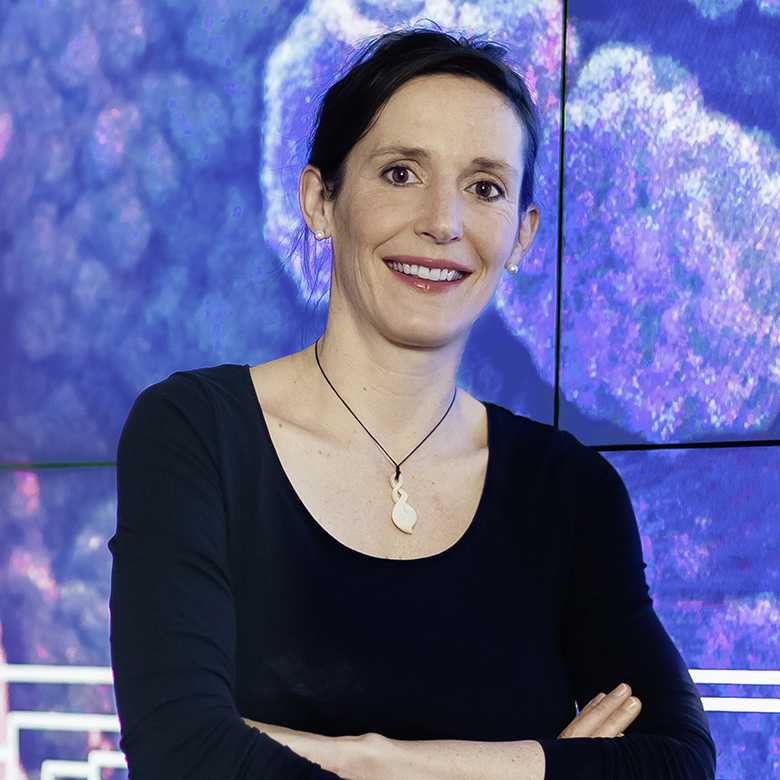Keeping up with the quick-change artists
Sometimes viruses and bacteria undergo genetic changes that alter their properties and eventually make them more dangerous to humans. Tanja Stadler’s mathematical models shed light on how fast they can mutate and spread.

Why are many antibiotics no longer effective in animals and humans? How is the antibiotic resistance of bacteria linked to viruses that cause infectious diseases such as influenza and Ebola? And what do they have in common with the evolution of penguins?
As different as these phenomena are, the processes underlying them can be described with closely related mathematical models. This is the area of expertise in which the mathematician Tanja Stadler conducts her fundamental research. As a Professor in the Department of Biosystems Science and Engineering, she studies viruses, bacteria, stem cells and the origin of species.
Stadler focuses on the information that is contained in the genes of all living organisms and viruses. This information has become much more readily available thanks to the latest biological methodologies such as DNA sequencing, and it provides insights into the processes that influence the course of epidemics and evolution. In principle, gene sequences can be read like a “book of life”.
A model as a magnifying glass
Galileo Galilei was thinking in similar terms when he said that the book of nature is written in the language of mathematics. Both these notions resonate with Tanja Stadler, who combines fundamental mathematical research with applications in biology and medicine. “We design mathematical models that can be used to understand and explain how genetic information changes and evolves,” she says. These models can be thought of as a magnifying glass that reveals previously unread passages in the book of life.
Stadler derives the theoretical foundations of her models from stochastics. This is a branch of mathematics that studies random processes, modelling events which occur only occasionally and whose occurrence cannot be predicted, precisely because chance plays a role. One of Stadler’s specialisations is “birth-death processes”, which she examines in the context of genetic mutations and reproduction. Mutations also occur spontaneously, and only occasionally. But when they do occur, they are subsequently inherited in randomly occurring reproductive events.
Stadler uses stochastic processes to study rates of change: How quickly do changes occur in the genetic information of humans, animals, bacteria and viruses? And how quickly are these changes inherited by offspring – or even transferred to other species?
Sometimes her work involves changes in the genome over very long periods of time. For example, working with New Zealand researchers she was able to show that the first penguin species emerged 12.5 million years ago. But when it comes to medical research and dealing with epidemics, it is the rapid changes that are particularly revealing: flu viruses mutate at such a rapid pace that different patients are infected with different mutated viruses even in epidemics that last just a few months. Bacteria in livestock farming can mutate within a matter of weeks or months to avoid the effects of antibiotics. But how fast do they pass on this resistance to the next generation or to humans?
“Access to constantly updated genetic data allows us to determine how quickly a mutant virus or resistant bacterium spreads through a city or region, and draw conclusions on the risk of infection for humans,” says Stadler. It is also possible to track a pathogen’s route of transmission: the greater the similarities between the genetic information of pathogens from two different people, the more directly the pathogen was transmitted between them.
Sparse data, smart models
During an epidemic, however, the routes of transmission are often so labyrinthine and random that Stadler has to get by with comparatively little sequencing data. Information on the genetic sequence of a pathogen generally comes from only a few patients or animals, and only at a single point in time during each infection so the situation is very much one of “sparse data” rather than “big data”. “We’re always working with incomplete snapshots,” she says, comparing it to an attempt to chronicle the history of a whole city based on just one photograph.
Like a detective, Stadler uses her scientific toolbox and creativity to extract meaning from the data. She is assisted by researchers at the University Hospital Basel. One project they work on together is antibioticresistant E. coli bacteria. Here she predicts the spread of the bacteria by collating the hospital’s patient data with data from livestock and agricultural production as well as data from wastewater. Among other things, she hopes that the genetic sequence data will provide insights into what happens when resistant bacteria emerge in livestock farming
To overcome incomplete data, mathematical models must be based on assumptions that are in line with the current state of knowledge in biology and medical science, says Stadler. Otherwise, the results will be inaccurate – as evidenced by the 2014 Ebola epidemic.
Tanja Stadler has another aspiration she would like to fulfil. Currently, she designs a separate model for each individual case: one for influenza, one for E. coli, one for penguins, and so on. But just like the members of a family, these models share certain characteristics. Based on these commonalities – and because “I can say for each model which questions it can’t answer” – Stadler is hoping to derive a “super model” that can be applied equally to viruses, bacteria, animals and humans. “That’s something I enjoy doing!”

